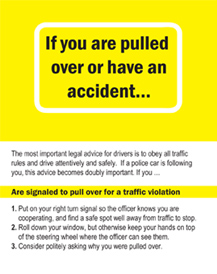Using a map of the scene
One helpful tool in car accident trials is for the personal injury lawyer to have a scale diagram of the scene of the accident. This can be detailed enough to include cutout cars that can show where both the plaintiff and defendant were, as well as any other traffic in the vicinity.
The scale diagram helps the jurors develop a visual image of the situation, and can turn most car accident cases into math problems that are objective and relatively easy to understand.
Private accident investigators can develop scale diagrams
If your lawyer chooses to have a scale diagram developed, the work will probably be done by a private accident investigator.
The investigator will begin by going to the scene of the car accident, and preparing a scale diagram of the area. This should be a fairly thorough assessment of the scene of the car accident, and should include distances from landmarks like light poles or street signs. The diagram should also include crosswalks and the location of all traffic control devices. Manhole covers and sewer covers are also landmarks that help in visualizing the scene.
The investigator can also check city or county records to determine whether there have been any changes in the area from the date of the car accident to the time he measured.
The investigator can also correlate his diagram to the official topographical map from the local government.
Using a magnetic accident board
Your lawyer and the investigator may go a step beyond a scale diagram, and develop a magnetic accident board. If they do, the board will become the focus for visualizing all the evidence about the car accident.
These magnetic accident boards are prepared by computer graphics companies, and the verification for the scale is the investigator’s work in measuring the intersection and confirming the lack of structural changes from the date of accident until the date he measured. The board can include magnetic cutout cars that are also to scale to complete the scene.
Testifying with a map or accident board
One of the benefits of having a good map of the scene or a magnetic accident board is that it makes it much easier for you to explain the car accident when you testify. Without a map or magnetic board it can be very difficult to explain dimensional relationships, but this process is much easier with the aid of maps or charts.
You can show on a street map where you live, where you were going, and the route you took leading up to the car accident. Then, particularly with a magnetic accident board, the description of the car accident becomes a relatively simple matter. You place your car and the defendant’s car on the board at their locations at the time of impact.
If the diagram has a distance grid on it, your lawyer can compute the distance backwards, showing where you and the defendant were at various time spans before the crash. For example, placing the cars at their collision minus two seconds location may demonstrate why you could not have seen the defendant coming when you entered the intersection.



